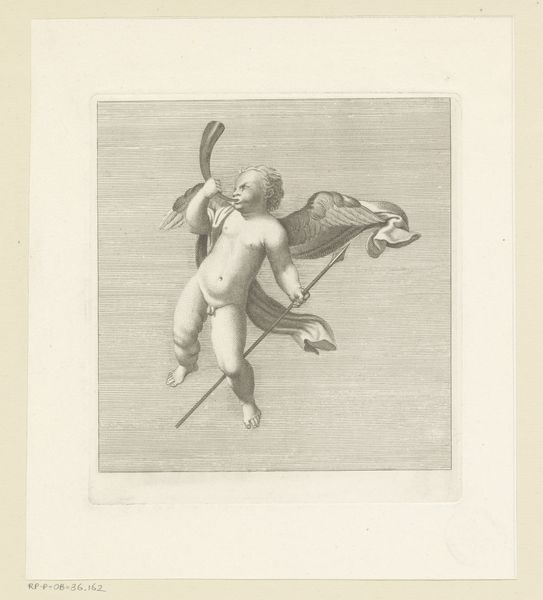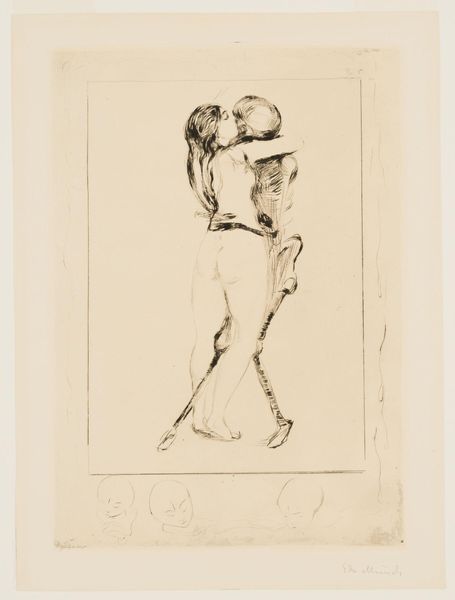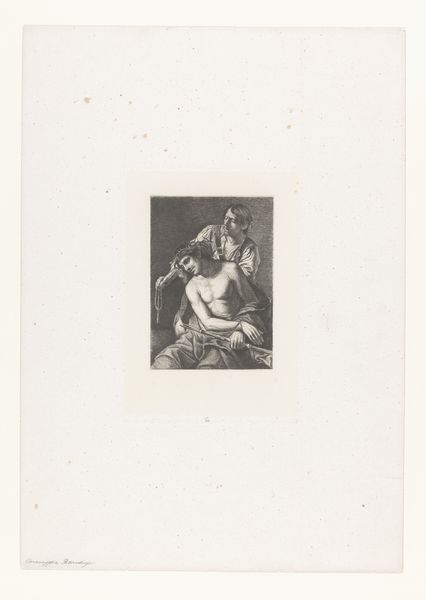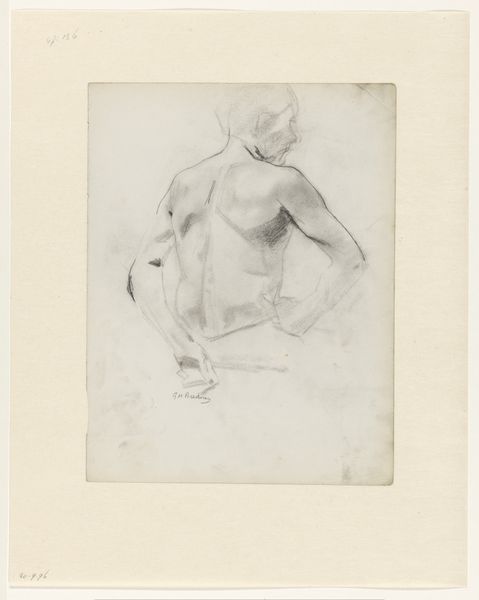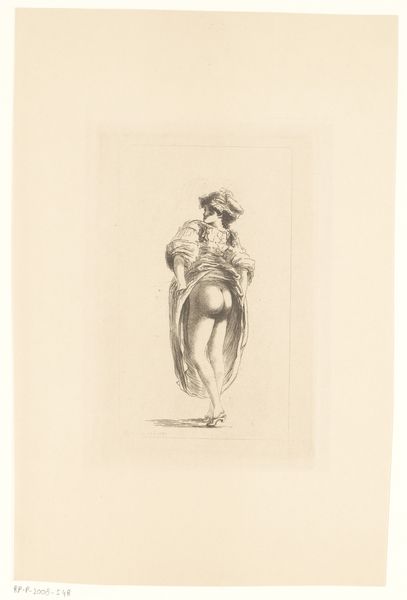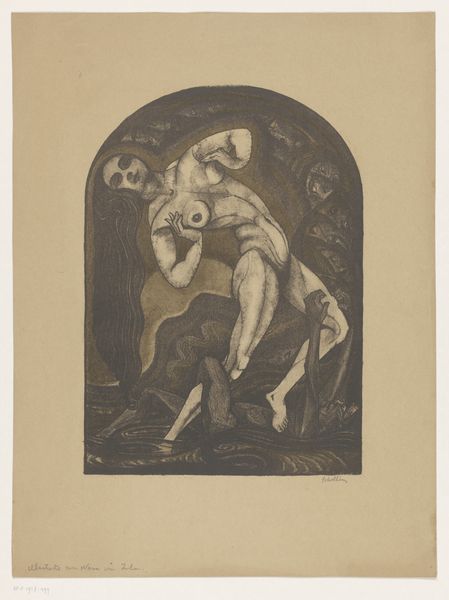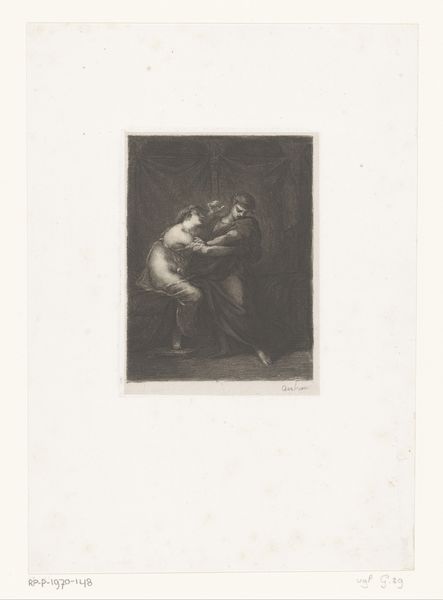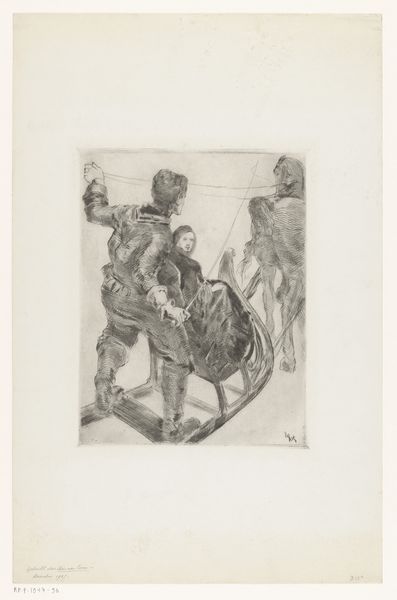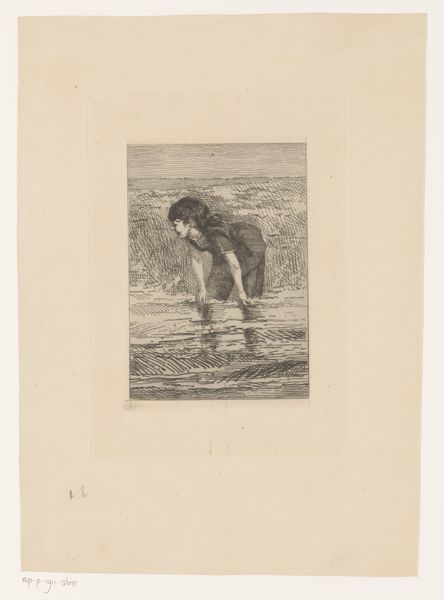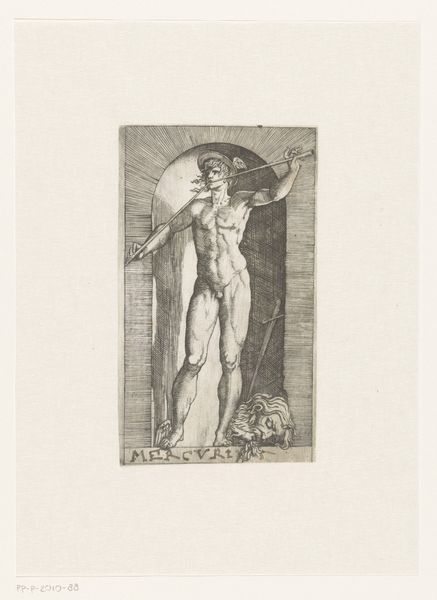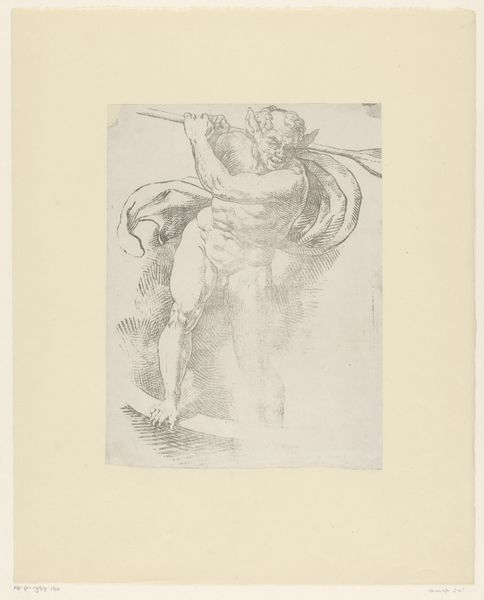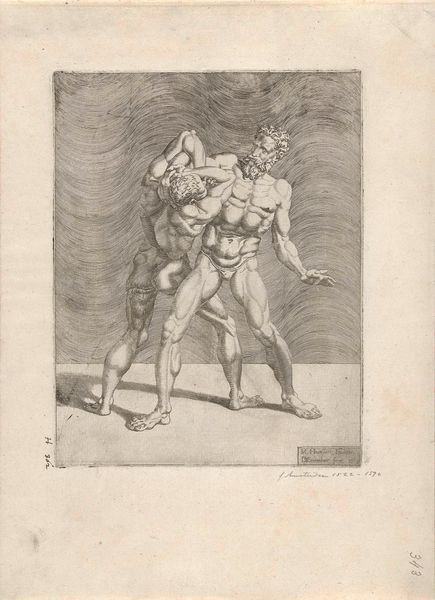
print, engraving
#
baroque
# print
#
old engraving style
#
figuration
#
line
#
italian-renaissance
#
engraving
Dimensions: height 177 mm, width 161 mm
Copyright: Rijks Museum: Open Domain
Giovanni Girolamo Frezza created this print of a putto with a quiver, sometime between the late 17th and early 18th centuries. Frezza worked in Italy, where the Catholic Church and noble families were important patrons of the arts. This image speaks to how art served social functions beyond mere aesthetics. The putto, or cherubic figure, is a classical motif that had been adapted into Christian art, representing divine love. In the 17th and 18th centuries, images like these would have been widely circulated as prints. They would decorate private homes, reinforcing social norms around love, family and religion, as well as demonstrate the owner's knowledge of classical and religious imagery. Frezza was part of a network of engravers and publishers who catered to this market. The historian's role is to trace the circulation of images like these, to understand the social and institutional contexts in which they were produced, and how they shaped the culture of their time. By exploring period documents, we can better grasp the public role of art.
Comments
No comments
Be the first to comment and join the conversation on the ultimate creative platform.
